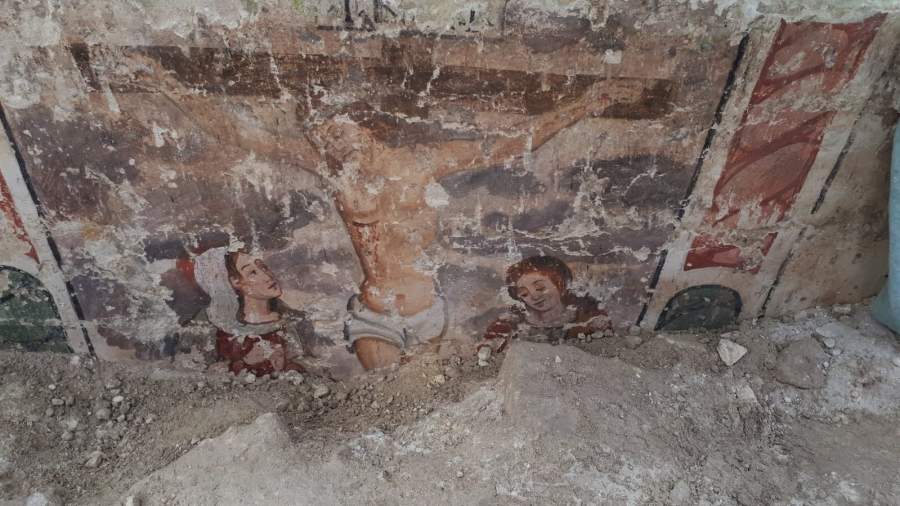Important discovery among the Sassi of Matera: in the area of Porta Pistola, between the ancient Barisano and Caveoso districts, redevelopment work on a building has unearthed a small sacred building that was buried for its entire height and features a fresco, presumably dating back to the 16th century. The discoveries were shown this morning to the mayor, Domenico Bennardi, and the superintendent of Archaeology Fine Arts and Landscape of Basilicata, Francesco Canestrini, who carried out a joint inspection.
In the area of Porta Pistola, in medieval times there was one of the gates to the city, which was called “Postierla” or “Postergola”: a back door, as this gate connected the city to the Gravina stream. In the same area, the convent of Santa Lucia alla Civita insists. The traces that emerged from the earliest stages of paving in the Porta Pistola area led to preventive archaeological investigations that uncovered ancient circular pits intended for the storage of foodstuffs and water; emptying from the fill soil also allowed the collection of interesting ceramic fragments. On the opposite front, the investigation made it possible to understand that the mighty retaining wall overhanging the Gravina stream (also resurfaced during the excavation campaign) is advanced from an earlier wall, also of considerable power.
It is the building with fresco, however, that is the most interesting discovery. “In these early stages of excavation,” says Superintendent Canestrini, “it is difficult to describe its characteristics with certainty, but the wall painting that emerged reveals the presence of a sacred building of uncertain attribution. The painting depicts a very well-preserved crucifixion, with brilliant colors and a very refined hand, datable, as far as currently visible, to the second half of the sixteenth century.”
“What has come to light so far is only part of what has been preserved,” argues Mayor Bennardi, “and allows for a new discussion of the data related to the layered history of our city. This is a happy episode of preventive archaeology that tells how dynamic, never still, historical research is a matter to be explored with care. The challenge that, again we face, is to combine protection and conservation with the possibility of valorization and fruition.”
The Municipality of Matera and the Archaeological Superintendence let it be known that they want to “collaborate with the utmost dedication to make sure that interventions are carried out with respect for the past and the present, which never appear to be separated, but even contemporary. A model that must become a method for the future of a city that, overflowing with history, continues to surprise.”
 |
| Sacred building with buried 16th century fresco discovered in the Sassi of Matera |
Warning: the translation into English of the original Italian article was created using automatic tools. We undertake to review all articles, but we do not guarantee the total absence of inaccuracies in the translation due to the program. You can find the original by clicking on the ITA button. If you find any mistake,please contact us.